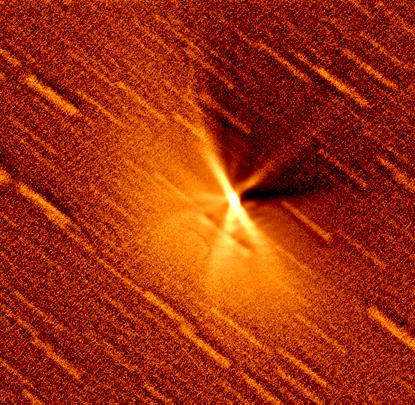Credit & Copyright: J. A. DeYoung (USNO)
Explanation:
Comets
become fountains of gas and dust as they get near the Sun.
Solar heat vaporizes the outer layers of these spectacular orbiting
icebergs,
exposing caverns of pressurized gas that erupt into jets.
The above digitally enhanced image of Comet Hale-Bopp
was taken on January 29th and highlights several of
these dust jets.
Here, background stars appear as faint raised streaks.
Comet Hale-Bopp is currently brighter
than most stars, and is visible in the morning sky.
Comet Hale-Bopp
will continue to brighten and develop an extended tail
until April.
1999 2000 2001 2002 2003 2004 2005 2006 2007 2008 2009 2010 2011 2012 2013 2014 2015 2016 2017 2018 2019 2020 2021 2022 2023 2024 2025 |
Yanvar' Fevral' Mart Aprel' Mai Iyun' Iyul' Avgust Sentyabr' Oktyabr' Noyabr' Dekabr' |
NASA Web Site Statements, Warnings, and Disclaimers
NASA Official: Jay Norris. Specific rights apply.
A service of: LHEA at NASA / GSFC
& Michigan Tech. U.
|
Publikacii s klyuchevymi slovami:
Comet Hale-Bopp - kometa Heila-Boppa - dzhet
Publikacii so slovami: Comet Hale-Bopp - kometa Heila-Boppa - dzhet | |
Sm. takzhe:
Vse publikacii na tu zhe temu >> | |
